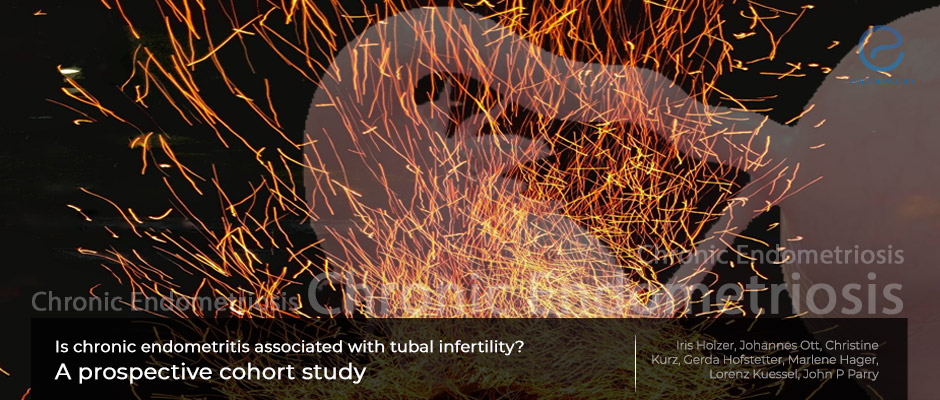The association of chronic endometritis, endometriosis and tubal infertility
May 18, 2021
Evidence shows a significant relation between chronic endometritis, tubal patency and endometriosis.
Key Points
Importance:
- Women with infertility often have concurrent chronic endometritis, endometriosis and tubal occlusion.
Highlights:
- There is a strong association between chronic endometritis, endometriosis, and unilateral or bilateral tubal occlusion.
What's done here:
- This is a prospective single-center pilot study by Dr. Holzer et al., Austria, and includes 100 primary or secondary infertile women.
- All women had a diagnostic hysteroscopy, endometrial biopsy (for presence of chronic endometritis) and a diagnostic laparoscopy to search for tubal patency.
- The relationship between chronic endometritis, endometriosis and tubal occlusion were compared by statistical evaluation.
Key results:
- The incidence of histopathologically diagnosed chronic endometritis is high. Higher rates of tubal occlusion and endometriosis encountered in this group.
- The presence of chronic endometritis is statistically significantly associated with tubal occlusion, and this linkage is strong among the women with endometriosis.
Strength and Limitations:
- Concurrent hysteroscopy-laparoscopy and chromopertubation for the assessment of intrauterine and extrauterine pathologies is the strength of the study.
- To have only 13 patients with chronic endometritis out of 100 in this pilot cohort, necessitates larger studies to prove the results of current study.
- Women without endometriosis should be evaluated to clarify the relation of chronic endometritis and tubal blockage.
- To perform hysteroscopy before laparoscopy may be a limitation as it may lead false positives for occlusion, longer operative hysteroscopies resulting in myometrial edema.
Lay Summary
Holzer et al. from the Department of Gynecologic Endocrinology and Reproductive Medicine of Medical University of Vienna, Austria, set up apilot prospective cohort study to evaluate the relationship between chronic endometritis, infertility and endometriosis. The results of the study were recently published in the "Journal of Minimally Invasive Gynecology".
This project includes 100 women diagnosed with infertility. The authors performed hysteroscopy, laparoscopy and histopathological evaluation for chronic endometritis on every patient to clarify the pathology of the endometrium, myometrium, and fallopian lesions of each patient.
Hysteroscopically there were 84 normal uterine cavities, 6 endometrial polyps, 8 Mullerian anomalies, and 2 leiomyomas. Fallopian tube patency was evaluated by a dye passage called "chromotubation" during laparoscopy, which revealed 22 bilateral and 20 unilateral tubal occlusions.
The diagnosis of chronic endometritis was evaluated by histopathological presence plasma cells, and 13 patients had pathological diagnosis of chronic endometritis.
There was a statistically important relationship between chronic endometritis and tubal occlusions. Since more than half of the study group was diagnosed with endometriosis, this relationship was underlined in this specific patient group as well.
The authors concluded that "Chronic endometritis is significantly associated with blockage of the Fallopian tubes and endometriosis, the endometriosis stage being associated with the number of plasma cells in endometrial biopsies". However, studies evaluating the underlying mechanisms and the findings of the study are warranted.
Research Source: https://pubmed.ncbi.nlm.nih.gov/33892185/
chronic endometritis fallopian tubes plasma cells hysterescopy diagnostic laparoscopy female infertility endometriosis.

